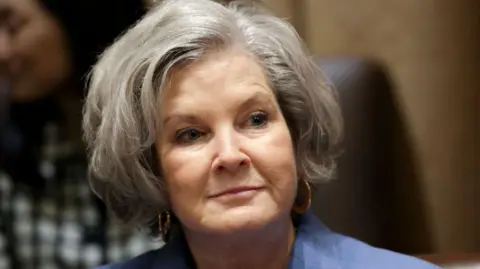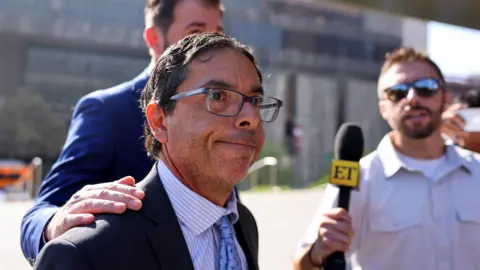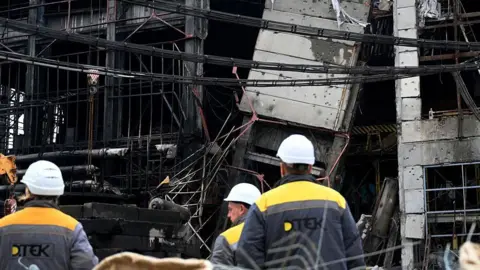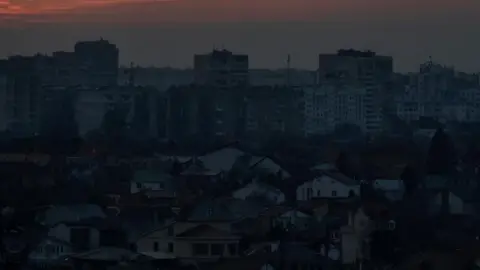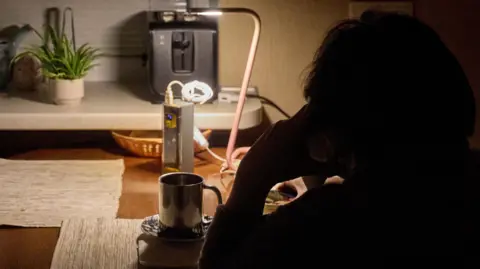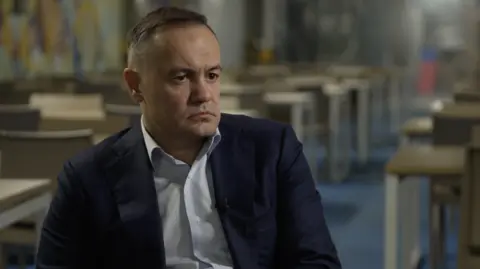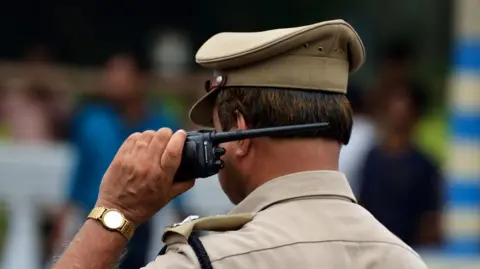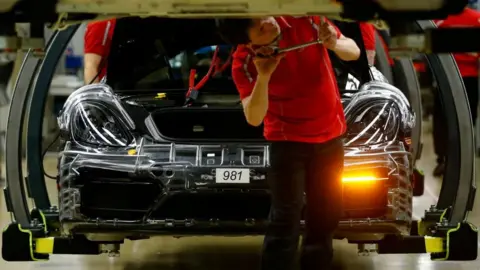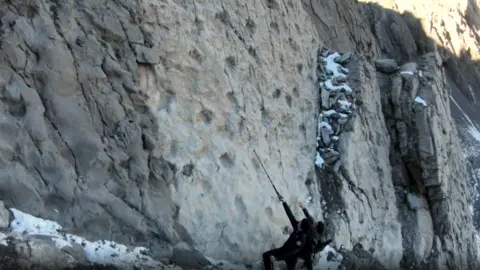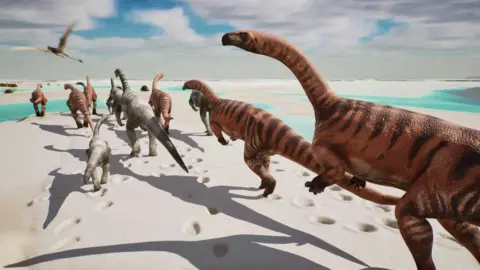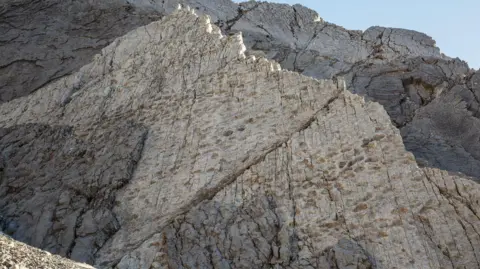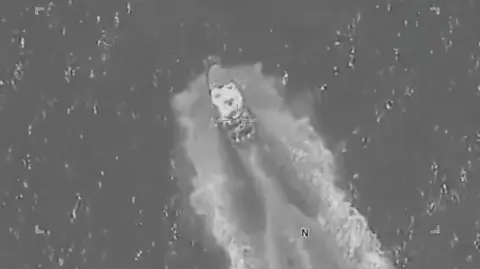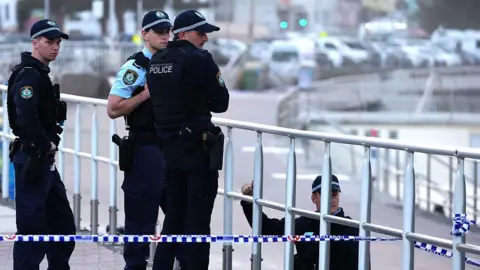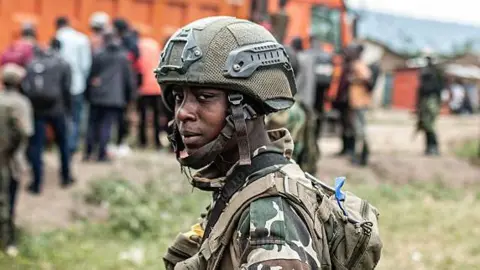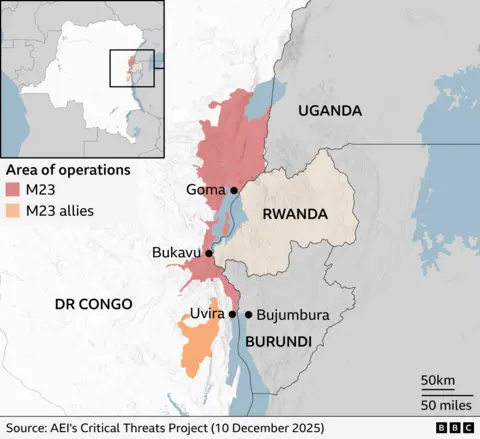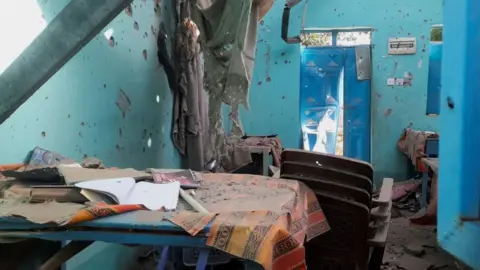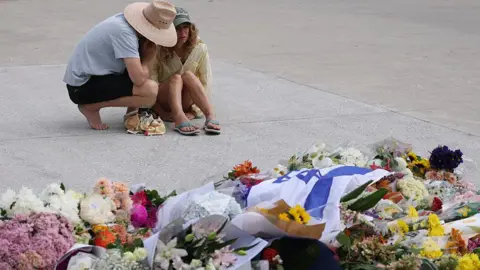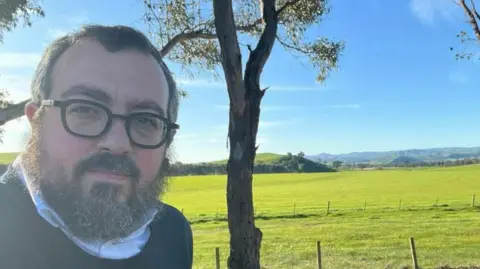US designates Colombian cocaine gang a terrorist group

 Getty Images
Getty ImagesThe United States has designated a notorious drug-trafficking organisation in Colombia as a terrorist group.
The US Treasury Department added the group, known as Clan del Golfo or Gulf Clan, to its list of Foreign Terrorist Organisations (FTOs).
The designation came just hours after US President Donald Trump signed an executive order classifying the drug fentanyl as a "weapon of mass destruction".
The two moves are seen as a further ramping-up of the Trump administration's war on drugs which has also seen it carry out more than 20 lethal strikes on boats suspected to be carrying drugs in the Caribbean and the Pacific.

 Getty
GettyMore than 90 people were killed in the strikes on the boats, which some legal experts say breach the law.
Clan del Golfo is the latest Latin American criminal group to be added to US Treasury's list of FTOs.
The group has been engaging in criminal activities for decades, mainly trafficking cocaine from Colombia - the largest producer of the drug - to destinations in the US and Europe.
But the Clan del Golfo, which is based in the northern Urabá region of Colombia, also plays a key role smuggling migrants through the Darién Gap, the expanse of jungle linking Colombia to Panama.
In a statement announcing its designation as an FTO, US Secretary of State Marco Rubio said the group was also behind terrorist attacks against public officials, law enforcement and military personnel, and civilians in Colombia.
It is estimated to have thousands of members and is thought to be the largest cocaine-trafficking gang currently operating in Colombia.
It joins three other Colombian criminal groups on the list of FTOs: the left-wing guerrilla group National Liberation Army (ELN), and two groups which broke away from the Revolutionary Armed Forces of Colombia - a Marxist guerrilla force - when it signed a peace agreement with the Colombian government in 2016.
The FTO designation of the Clan del Golfo by the US comes less than a fortnight after Colombia's President, Gustavo Petro, signed a landmark agreement with the criminal group aimed at bringing peace to the areas under its control.

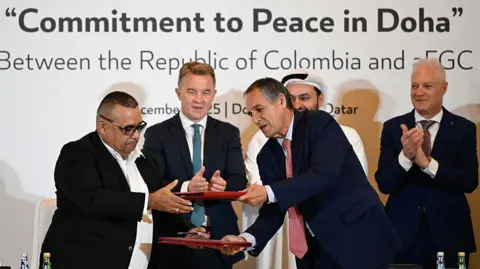 AFP via Getty Images
AFP via Getty ImagesPetro campaigned on a promise to bring "total peace" to the South American country, which has for decades suffered from cartel and guerrilla violence.
But more than three years after he took office, talks with most of the armed groups in the country have stalled or fallen apart altogether.
The announcement earlier this month that Colombian government officials had reached an agreement with the Clan del Golfo for the group to start taking steps towards laying down their arms was a win for Petro.
Part of that deal was an understanding that members of the Clan del Golfo would not face extradition to the UN.
The US designating Clan del Golfo as an FTO is likely to complicate the talks the Colombian government was having with the group.
Petro has not yet reacted to the move, but relations between the Colombian leader and the Trump administration have been acrimonious.

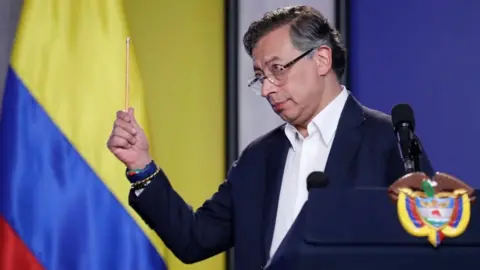 EPA
EPAPetro has called the lethal strikes the US has carried out on alleged drug-smuggling boats in the Pacific "murder".
In turn, Rubio has publicly labelled the Colombian president a "lunatic".
The immediate effect of the FTO designation is that the US will have more powers to punish the group.
Any assets the Clan del Golfo may hold at US financial institutions are frozen and individuals - even US citizens - who knowingly provide "material support" to the group can be prosecuted.
The move comes amid high tension in the region, with Trump repeatedly warning that "strikes on land" against "narco-terrorists" could soon follow those against alleged drug vessels at sea.
So far Trump has mainly homed in on Venezuelan President Nicolás Maduro, whom he accuses of leading another group the US has designated as an FTO: the Cartel of the Suns.
But asked by journalists about his plans for Venezuela on Friday, he not only again invoked the possibility of attacking drug smugglers on land but also appeared to hint at the possibility of doing so in Colombia.
"Colombia has at least three cocaine factories. That's a different country," he said.
And later he added: "But it's not only land strikes on Venezuela, it's land strikes on horrible people that are bringing in drugs and killing our people."
Trump has argued that the strikes on the alleged drug boats are saving US lives by preventing the powerful opioid fentanyl from reaching the US.
Fentanyl abuse has triggered one of the worst public health emergencies to hit the US, with more than 110,000 drug-related deaths in the US in 2023.
While the number of fatal drug overdoses fell by 25% in 2024, tackling this crisis remains one of Trump's priorities.
Trump has said that every strike on an alleged drug boat "saves 25,00 American lives" but US officials have provided no evidence that any of the vessels they struck carried fentanyl, which is 50 times as powerful as heroin and much deadlier than cocaine.
Counternarcotics experts have pointed out that neither Colombia nor Venezuela produce fentanyl and have questioned the Trump administration's focus on those countries.
The executive order Trump signed on Monday classifying fentanyl as a "weapon of mass destruction" suggests he may be engaging in a twin-track approach, continuing to target boats suspected of carrying cocaine as well as expanding his administration's powers to fight fentanyl-smuggling.
However, the move has been met with criticism by Mexico's President, Claudia Sheinbaum.
The Mexican leader insisted that the causes of drug use must be addressed.
She added that fentanyl was also used legally in hospitals for pain relief and questioned what the unintended effects of the classification of fentanyl as a weapon of mass destruction would be.
